Audio Systems: Classification, Components, Specifications. Rules for the location of acoustics in the interior.
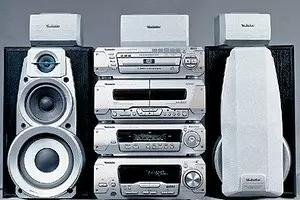
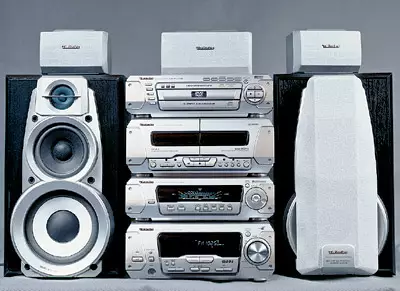
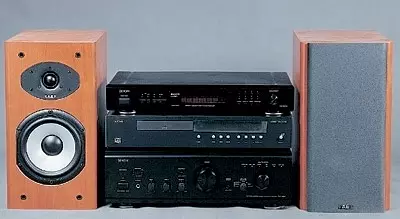
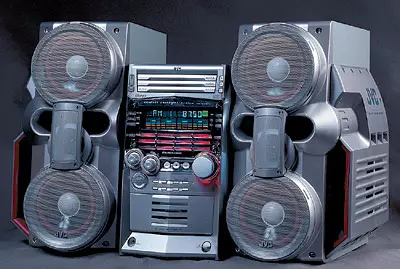
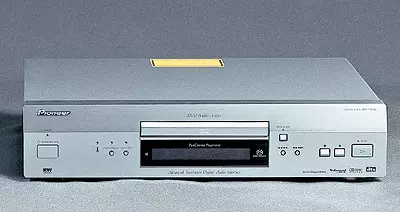
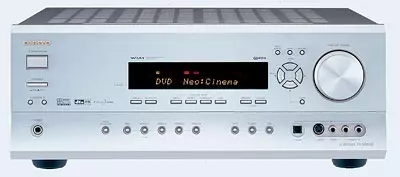
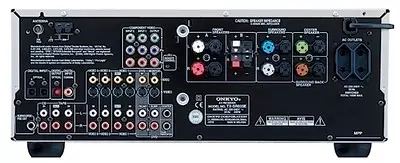
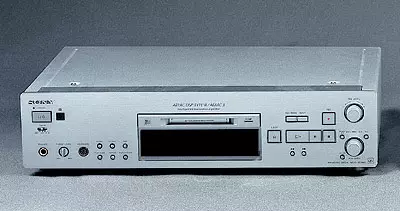
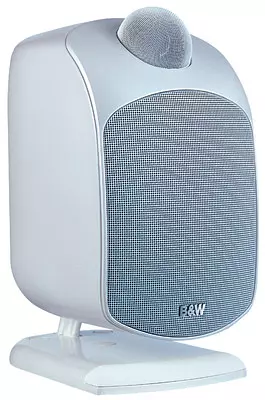
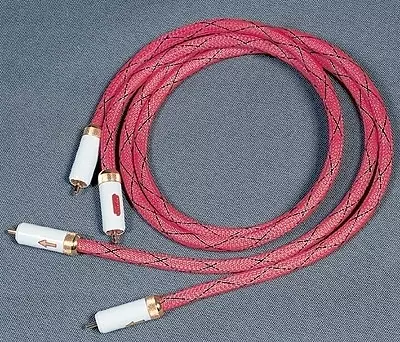
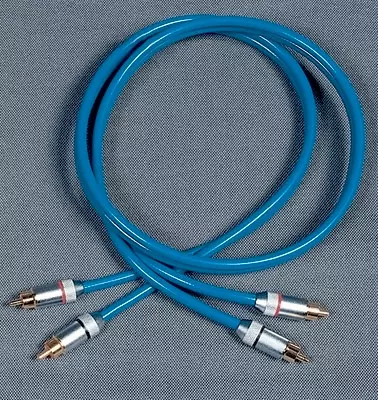
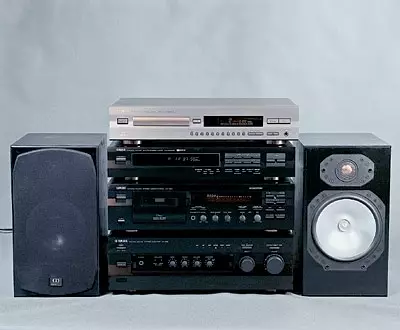
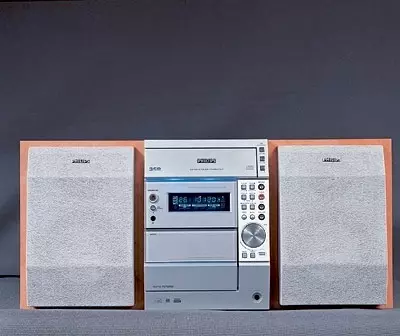
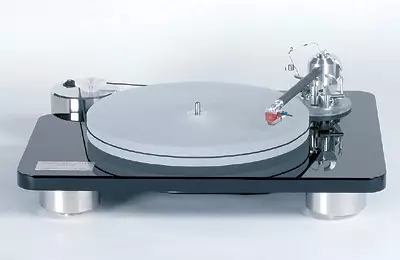
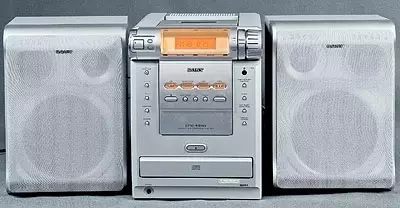
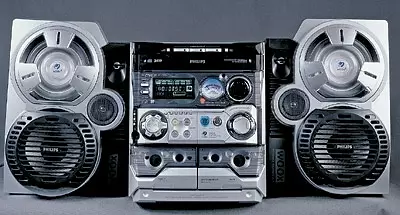
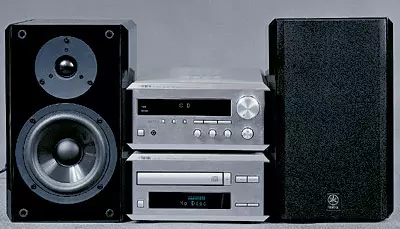
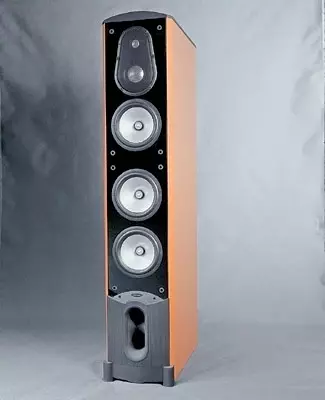
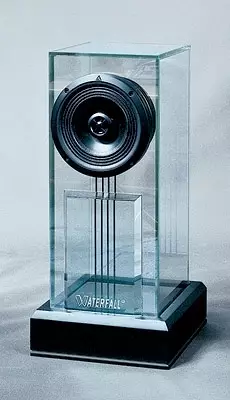
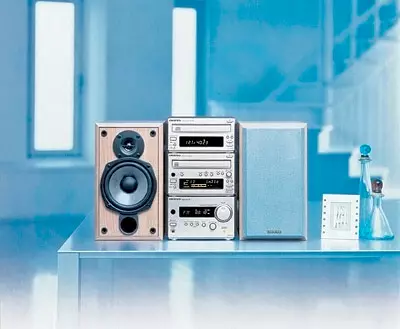
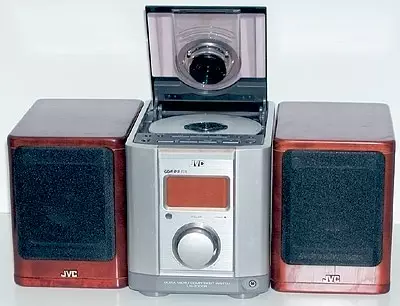
Most of us at least once in your life acquired a home audio system. Someone has chosen on the simplest portable boombox, others have equipped a niche of a sleeping headset of medium-sized mini-system, well, the most avid music lovers created the semblance of a concert hall, placing a powerful speaker system around the perimeter of his living room.
| Model | A type | CD player (the number of downloaded disks, reproducible formats) | Tuner (Radio Ranges, Number of Stores) | Cassette deck (number of downloaded cassettes, the availability of autorevers) | AU (power, number of strips, frequency range in Hi-Fi-systems) | Equalizer (availability, modes) | Dimensions, mm (height width depth) | Other features | Price, $ |
|---|---|---|---|---|---|---|---|---|---|
| Up to $ 300. | |||||||||
| Vitek VT-3470 | Micro System | 1 CD, CD-R, CD-RW | FM, AM. 10 + 10. | 1 Autavers | 25 W 2-LAN | Absent | 280690300. | Exclusive design: The main unit and columns are made in the form of three pyramids, and the central peak in the dark glows soft blue light | 110. |
| Philips MC 50/22 | Micro System | 3 CD, CD-R, CD-RW | FM, MW, LW 40 | 1 Autavers | 25 W. 2-ways | Hand adjustment high and low frequencies | 250539310 | - | 219. |
| JVC MX-K10 R | Mini System | 3 CD, CD-R, CD-RW | FM, AM. 30 + 15. | 2. | 15 W. 3-band | POP, ROCK, CLASSIC, ACTIVE BASS | 310725390. | - | 219. |
| Samsungmmb9 | Micro System | 1 CD, CD-R, CD-RW | FM, MW, LW 15 + 8 + 7 | 1 Autavers | 40 W. 3-band | POP, ROCK, CLASSIC, SUPER BASS | 290590320 | Extended range FM. | 227. |
| $ 300-500 | |||||||||
| Sony CHC-TB10 | Mini System | 1 CD, CD-R, CD-RW | FM, AM. 20 + 10. | 1 Autoreur | 50 W. 2-ways | Pop, Rock, Classic, Hall, Stadium | 290610340. | Low frequency gain Groove | 300. |
| Philips FW C785 / 34 | Mini System | 3 CD, CD-R, CD-RW | FM, MW, LW 40 | 2 Autorevers | 120 W. 3-band | Pop, Rock, Classic, Hall, Disco | 360750400. | Low frequency gain WOOX | 330. |
| JVC HX-Z3 R | Midi System | 3 CD, CD-R, CD-RW | FM, AM. 30 + 15. | 1 Autavers | 70 W. 3-band | Pop, Rock, Classic, Hall, Disco | 440670350. | Hand adjustment of low frequencies | 490. |
| $ 500-1000 | |||||||||
| Yamaha CRX-E200 Silver | Micro System | 1 CD, CD-R, CD-RW | FM, AM. 30 + 15. | No, but you can connect | 60 W. 2-ways | Hand adjustment high and low frequencies | 300600220. | 2 block system: CD + TUNER | 580. |
| Sony MCH-S7AV | Midi System | 3 CD, CD-R, CD-RW | FM, AM. 20 + 10. | 2 Autorevers | 120 W. 3-band | Hand adjustment high and low frequencies | 470750330. | 5-block system: CD + TUNER + amplifier + TAPE | 715 |
| Technics SC-DV280 | Midi System | 5 CD, CD-R, CD-RW, VIDEO-CD, DVD | FM, AM 40 | 2 Autorevers | 65 W. 3-band | Hand adjustment high and low frequencies | 420750300. | Pro-Logic, Super-Surround | 960. |
| ONKYO HS-N1 | Hi-Fi-Mini System | 1 CD, CD-R, CD-RW | FM, AM. | Absent | 30 W. 2-ways | Pop, Rock, Classic, by Pass, ACOsTic Presents | 203270234 (electronic unit) | Exit from the preamp for a subwoofer, USB port | 930. |
In the 60-70 nodents of the past, the XXVEK existed two classes of musical instruments. The first was called Portable and was a monoblock portable system with the possibility of autonomous nutrition from batteries. According to today's standards, portable devices of those years were intended for real Hercules, before the cumbersome. The second class of equipment was called Hi-Fi (Otangliy High Fidelity- high loyalty). These systems were collected from individual blocks, were stationary and cost more. True, and reproduction they provided significantly better.
Attempting to classify music systems today is not easy. You can divide them into three large groups: portable (monoblock structures with a tuner, tuner, and (or) CD player), stationary music centers (so-in number of pseudo-module systems without the possibility of replacing the block), block-modular systems (each unit independent and replacing) . Additionally, the sizes are distinguished by the micro (the width of the front panel without columns 120-220mm), mini- (220-300 mm) and midi music centers (300-400mm). Block-modular systems are mini (panel width to 220 mm), midi (220-380mm) and standard full modules (430-480mm).
Today, music centers produce dozens of firms under the trademarks of AIWA, JVC, Kenwood, LG, Panasonic, Pioneer, Samsung, Sony, Technics, Yamaha, and others. Among the music centers are distinguished by a separate Life Style product group, which are distinguished by unconventional design and high performance. Bright examples can be JVC UX-7000, BOSE LIFE STYLE.
Block-modular audio systems must satisfy the requirements of the Hi-Fi category. In the Russian market, this class is represented by many firms: Denon, Marantz, Onkyo, Panasonic, Pioneer, Teac, Sony (Japan), Philips (Holland), Revox (Switzerland), Unisound (USA), NAD (United Kingdom) and others. The most expensive And the highest quality class of equipment produced in single instances and almost always manually received the name Hi-End. Most firms working with AV technology are producing equipment of this class. However, there are those who specialize only on Hi-End: Mclntosh, Mark Levinson, Wilson Audio, Martin Logan, Legacy (USA), Jm-Lab (France), etc.
Human hearing is able to perceive sound frequencies from 16gz to 20 kHz, which is about ten musical octave. This range can be approximately divided into three groups: low (16-250 Hz), medium (250-2000 Hz) and high (2000-20000 Hz) frequency (sometimes six groups are distinguished). Depending on the speakers of specific acoustic systems, the boundary between low and medium frequencies can run in the range of 100-300 Hz, and between the average and high-2000-8000 Hz.
Each musical instrument, depending on its "voice", sounds in a specific range, music styles are also distinguished by the predominance of a certain frequency band. Therefore, when choosing an acoustic system, it is necessary to take into account the music addictions of the listener. Lovers of the author's song under the guitar are recommended to give preference to the quality of medium frequencies, disco fans and techno-low and high frequencies, rock fans and jazz-low and medium. Classical music affects the widest sound spectrum.
Components of the audio system
Interesting to acquire a compact mini-system or collect a Hi-Fi-set, the buyer will certainly face a huge selection. A lot of firms, many models ... inexperienced newcomer, as they say, have to be tight. Therefore, first of all it is necessary to decide which functions you expect from your musical instrument. Will this "minimal gentlemanic set" (radio and the usual CD player), or you don't have a chat in old vinyl, but also want to join the new SACD format, HDCD? If the losing devices are always a customer selection, then components such as an amplifier, an acoustic system must be present in any musical system, even the simplest. Let's try to stay in more detail on the description of the various components of the audio system.CD player. Today it is difficult to detect at least one audio system on the market, in which there would be a device for playing CD. Even most of the modern radio tape recorder are equipped with a laser player (the result of which the name of the CD magnetol was born), and the musical centers and Hi-Fi systems usually have multi-disc players (buyers often call their CD changer), designed for simultaneous loading of two-five, and Sometimes even six disks. CD, as you know, you can listen, starting with any of the compositions recorded on it. Moreover, many of the modern losing devices allow you to set the order of playback of songs from several loaded disks in an arbitrary order.
Small size CD (only 8 or 12 cm in diameter, weighing 15-30g) first appeared in 1982. IR The mid-90s practically displaced the analog speakers of audio cassettes and vinyl records. The information on the CD is recorded in a digital encoded form, and its reading occurs by a non-contact method of a miniature semiconductor laser. Then, through a digital-to-analog converter (DAC), it is provided to a standard audio signal entering the amplifier input. Thanks to the digital form of information presentation, it does not wear a disk itself nor the reading device, and the music lover gets the ability to repeatedly listen to the recording without a change in quality. The same CD is resistant to mechanical exposure to pollution and small scratches.
Cassette deck Still among lovers of analog sound and owners of music libraries with unique entries on audio cassettes. One of its main advantages is the low cost of the information carrier (about $ 20 per licensed audio cassette with the record). The unstead of Hi-Fi set will not meet it as often, but by purchasing a monoblock system, you will most likely find in its composition single or two-channel deck. It will be equipped with cases of cases of synchronization with CD (which allows you to write with a CD to audio cassette), as well as the autorevers function. Increasingly, in the composition of "fashionable" Hi-Fi-monoblocks, it replaces similar by MD-Dec functions.
Tuner (Otangl. Tune- customize), or radio reception, is analog or digital. The advantage of the last-better signal reception and accurate adjustment to the frequency of the listened radio station. As a rule, the tuner works in several ranges: FM, AM, MW, LW and sometimes has an extended FM range, more and less "closing" domestic VHF stations (65-74 MHz), popular among many Russian listeners.
Amplifier We are needed to increase the power obtained from the player (any) signal without distortion. The principle of its action is based on an increase in the intensity of electrical oscillations while maintaining their shape (frequency spectrum, phase relations). Depending on the element base, the amplifiers are tube and transistor (Namicroshem). Lamp amplifiers widespread in the middle of the last century today are rarely found, mainly in the Hi-End-End-End-class equipment.
The main parameter of the amplifier is the rated power on the channel, which is determined by the specified value of the harmonic distortion coefficient (KOB). BC for lamp amplifiers is no more than 1%, but for transistor, not more than 0.2%. If the manufacturer does not indicate the rated power of the channel, then it can be approximately evaluated as a quarter of the maximum power consumed from the network, indicated on the back of the apparatus or in the product passport.
The power of the amplifier is selected depending on the type of music listened (classic, rock, etc.) and the size of the room (for example, for the "Cabinet" sound of the audio system in a 14m2 room with a rather rated power of the amplifier 20W per channel).
Receiver Combines the function of the multichannel amplifier and tuner (in the cinema) in one block.
Equalizer (Otangl. Equalize- equalization) - a device that allows you to adjust the timbre of sound by regulating the amplitude of sound oscillations in various frequency bands. Thanks to this device, you can select the most adequate sound of various styles of music: jazz, rock, country, raw, techno, classic, etc.
Most firms produce graphic equalizers. This device with multiple filters, each of which adjusts a certain narrow band band, amplifying or reducing the intensity of the sound of this strip. The parametric equalizer is more complicated and gives a better sound. Additionally, it regulates the width of each strip, and is also able to shift its central frequency.
Acoustic system (AC) usually consists of several blocks in which speakers of different types are embedded (depending on their number in one block, acoustic systems are two-, three-band, etc.). Each speaker is designed to play a specific frequency band. The cost of the acoustic system can be several hundred dollars, and several thousand, and sometimes it comes to tens of thousands. Whether to give the buyer the sound of a particular kit of acoustics depends, first of all, from his, buyer, individual characteristics of the floor, age, physical condition, musical addictions. Choosing the harmonious to your taste design and acceptable sizes of a set of equipment, do not forget to listen to its sound and take into account the characteristics of power, resistance and non-uniformity response (amplitude-frequency characteristic).
Manufacturers may indicate different power parameters in the instructions. Task buyer- To coordinate the maximum input long-term power of the AC with the rated power of the selected amplifier. For example, for an amplifier with a power of 50W to the channel, the recommended power of the AC 20-150W, the smaller power of the AC can lead to the failure of the loudspeakers.
The AC efficiency rarely exceeds 1%, so the acoustic power created by loudspeakers in the room can be hundreds of times less than the rated power of the musical system amplifier. For example, the acoustic capacity of the symphony orchestra in full compound from 120 tools into the climax of only 20W.
Most amplifiers are designed to connect the speakers with a nominal resistance from 4 and higher, and 8Ω is preferable. Plisport either on the rear panel of the amplifier usually contains recommendations on the nominal resistance of the AU.
Finally, the frequency range. Results of Hi-Fi-systems, the frequency range can be from 40 Hz to 20 kHz. The unevenness of the ACH according to MEC (International Electrical Commission) for HI-FI category systems in the range from 50Hz to 12.5kHz should not exceed 4DB in the middle of the range and -8DB at the edges. Frequently sounding musical centers The frequency range is 50Hz- 12,5kHz. If the manufacturer expands the boundaries of the range, then most likely this is an advertising move.
Unconventional players
So, we listed the main components of the audio system found in the market. But, except for the most popular CDs and audio cassettes, there are many other sound media. As evidenced, and other losing devices. The avid music lovers, of course, may argue with the definition of "non-traditional", but precisely these devices are for the average listener.
Vinyl players. In the early, Melomanna time again turned their attention to the players of vinyl records. There are several reasons for this. Some listeners simply prefer the analog sound digital - it is more "alive", there are no quantization noise. Udrugih preserved an extensive library of vinyl discs, and after all, many unique entries were never reprinted on CD. For third, the design of the vinyl player is attractive, smoothly sliding on the surface of the disk diamond needle creates a sense of solidity and heat of sound. The Russian market presents vinyl players of such firms as Pioneer, Technics (Japan), NAD (Canada), Clear Audio (Germany).
Deciding to include in your audio component vinyl player, you should remember several important points. First. Even the cheapest models are worth not one hundred dollars (one of the cheapest PioneerPl990 players will cost the buyer at $ 190), and the price of top can reach several thousand and even tens of thousands (for example, a high-quality "Master Reference" Clearaudio Master Reference is $ 14 thousand). Avo-second, when buying a record player, check for the built-in phonocorrector in the player or amplifier (the corresponding audio input of the PHONO must be present on the rear panel of the amplifier).
MD player Suddenly gained popularity of 3-4 years ago, but today almost extended fashion. For fans of MD disks, a large number of specialized players are still sold, but the individual blocks of Hi-Fi levels are gradually rare (for example, Sony MDS-JA33ES). Those who have never met with the Mini-Disk device, we inform: it is really small in size carrier (diameter 64mm), to protect against dust and scratches packed in a 68725mm plastic cassette. Recording a digital or analog (!) Signal to the disk is made using ATRAC (Adaptive Transform Acoustic Coding), as a result of which the initial information is compressed at 5-6 times. The maximum duration of recorded information, as in the usual CD, is 74min. The cost of the MD disk today is only 50 rubles.
SACD, DVD-Audio-players. SACD (Super Audio CD) discs today have already found their public, their choice is calculated by hundreds and covers a variety of musical directions: classics, jazz, rock, pop music. A distinctive feature of the disk is a multichannel sound. Most of the carriers of this type of two-layer (CD- and SACD layers), therefore, not only special equipment is capable of reproducing their sound, but also conventional CD players. The cost of one SACD disk is comparable with the usual licensed CD: $ 18-25.
I have not yet become so widely popular DVD-Audio format allows you to record both two-channel and multichannel sound. Additional information can be placed video clips, photos, texts. This format theoretically allows you to record audio signals in the frequency band from 0 to 96 kHz (while in the usual CD, the audio frequency band does not go beyond the scope of 0-22,5kHz).
With the onset of the era of home theaters, manufacturers often combine the possibility of playing DVD video discs and modern audio. An example of such a multi-format device - Marantz DV-8300 (winner of the European competition Award EISA in the Audio Player nomination, cost $ 1860), capable of reading DVD-Video, DVD-Audio, SACD formats, music CD, Video CD, SAVD, MP3, HDCD. By the way, the number of users of MP3 format (MPEG Layer3) is constantly increasing. Not related to high-quality sound recording formats, it attracts the ability to place on one disk up to eight hours of the music record.
How to assemble a Hi-Fi system
The easiest answer to this question is to accumulate more money and entrust the choice by a specialist. There are firms that are engaged in a complete set of musical systems and home theaters. However, the very host of the future "treasures" will not prevent one simple truth: all components of the audio system ideally must be mutually agreed in quality. It is believed that the characteristics of the audio system are determined by the characteristics of the lowest component in terms of quality. Thus, if there are high-class loudspeakers and an excellent vinyl disc player, all their advantages can be lost by including an inappropriate amplifier in the path.A high-quality system can be collected from both components of one brand and from products of different firms. Compatibility (orCategorical incompatibility) of various audio devices You will definitely comment in a good store. For example, the specialists of the company "M.Video" offer two ready Hi-Fi sets. The first consists of four Yamaha blocks (CDX-496 CD player, KX-393 cassette deck, TX-492RDS tuner and AX-396 amplifier) and is supplemented with Monitor Audio Silver S2 acoustics. The total cost of the system is $ 1480. The second option is assembled from blocks of various manufacturers: Arcam Diva CD72 CD-player, Denon TU-1500RD Tuner, Denon PMA-1055R amplifier and English AEFPRIT 300 English acoustics, Cost - $ 2290. The final decision on the purchase is advised to take only after multiple listening of components in various sets. The name of the company, the technical characteristics and the council of the specialist is just a recommendation. The most important criterion for selected rumors.
Serious attention is worth paying and designing equipment. The appearance of the main components (players, amplifiers, equalizers) in most producers are very close: a metallic box of silver or platinum color with a multitude of buttons or spinning handles. Avtid The appearance of acoustic systems is the embodiment of the most insane design fantasies. Solid and screaming; tiny, size CD, and huge, in human growth; Slender and "chubby"; Teasing metal and soothing from natural wood ... Most likely you will be able to navigate, which of them are worth become full "residents" of your interior. However, it is not necessary to give preference to the design to the detriment of the technical and high-quality level of the system.
Among the fans of Hi-Fi and Hi-End are two opposite trends. Some strive to make the main focus of the interior from the acoustics, its energy center. Firms are happy to respond to such a desire and offer the most impossible dynamics in their appearance. For example, the German company AC AVANTGARDE acoustic has released the horn acoustics of huge sizes, stylized under the 50th nations of the last century and very beloved jazz fans. Another extreme is the choice of embedded acoustics, which is designed to be the most imperceptible. In this case, it is worth paying attention to the products of American firms Sonance and Speakercraft.
Be sure to relate the dimensions and power of the acoustic system with the size of the room (room in the city apartment or a spacious country house). The speakers, ideally sounding in a 58m room, can be too bass and loud in the room are two times less (45m). Home Theater Owner is wiserfully to acquire one audio system that will serve both theater (multichannel sound), and audio equipment (stereo sound). If you have not yet acquired a home cinema, but you are going to do this in the coming year or two, it is also wiser to purchase a multichannel audio system (5.1, 6.1 or 7.1, depending on your desire for excellence). The simplest multichannel system 5.1 includes two frontal dynamics, one central, two rear and subwoofer, in 7.1 two other side speakers are added.
Music centers
Hi-Fi-Fi-equipment is designed for avid Mulomanana. The buyer who perceives music is simply like good entertainment and the possibility of resting, most likely will be acquired by the acquisition of a high-quality micro or mini-system. Especially since the price is a more acceptable option.
Never purchase a music center without prior audition, "bought" on his unique appearance! Attakly pay attention to the functions: it is better that the CD-changer allows you to change the discs during playing one of them, the tuner was digital, and the autoreshens decament. You may receive an MP3 disk player in the load (for example, in the Philips MC90 model worth $ 600). Check out the remote control, screw the equalizer knobs (how realifically it changes something in the sound), relate the power of the system with the size of its room. Rate the sound of bass- it should be deep, moderately saturated. Elastic and assertive bass prefer to a decaying: it is possible to determine this property when focusing on the drum-bass note should not be sounded after the end of the drum strike. And ... Do not forget about the design!
By the way, the Annual Prize of the European Audio Press (EISA Award) over the past four years has received the following models of music centers: JVC UX-MD 9000R (1999), Yamaha Piano Craft (2000), JVC FS-SD 1000R (2001), Denon 201 SA Series (2002).
Accommodation in the interior
Walls, floor, ceiling and furniture items can be considered full elements of the acoustic system. It is identical, the sound of the same set of columns will be unequal in different rooms. The secret is the acoustic features of each room: reverberation time (multiple decaying reflections of the wave), sound-absorbing properties. There is even a whole science that studies these features is architectural acoustics. For modern apartments with a room of 30-100m3, an acceptable reverb time is approximately 0.15-0.3C.
A room intended for listening should be especially carefullyroidered from external noise sources that can spoil the impression. For this, you can use two-chamber double-glazed windows with different thickness of the glass location. Ventilation and air conditioning systems are recommended to provide silencers. Finded cases of walls and ceilings can be completely treated with special materials, such as Ecophon Acusto soundproofing panels (manufacturer-Swedish Ecophon concern).
The sound wave, meeting the barrier, according to the laws of physics, will partially affect it, partially dispel, will partially be absorbed. The harder and dense wall, the more acoustic energy it reflects (that is why the "arias" in the bathroom sounds so well). A large number of reflections cause echo and blur the sound scene, make a sound with a murmur. With too much absorption (a lot of carpets, heavy curtains on the windows), the sound becomes deaf and inexpressive. Check, "Live" room or "dead", you can, clapping in your hands: If you hear distinct sounds and even echo, the room must be muffled. On the contrary, with very deaf sound, it is recommended to endure thick carpets or replace them with lightweight tracks and mats.
The best way to combat "parasitic" reflections - scattering of the sound wave. Scattering surfaces serve, for example, bookshelves (uncrowded), blinds on the windows, paintings. The elements of the interior having the dimensions of 10-20 cm create a scattering effect for frequencies above 1000 Hz, the effects of 1-2th meters appear at frequencies 200-500 Hz. Good results gives the imposition of small structures on the larger, in this case, the dispersion of sound energy occurs evenly in a wider frequency range. On the flat ceiling of the height room, wooden rails can be fixed. There are also "professional" scattering devices, such as tuning lining HarmoniXS RFA-781 (Japan). The so-called "pipe traps" (Tube Trap) made by Acoustic Sciences Corporation (USA) are cylindrical devices made of hollow fiberglass pipes with a diameter of about 28cm. One side of the cylinder has absorbing properties, and the other reflective. Turning them around their axis, you can choose the "mode of operation" for each room. The water room often requires several such "traps" at once: you can install them in the corners (in order to get rid of low-frequency standing sound waves), along the side walls, etc.
Also, problems with sound occur due to the wrong placement of the front speakers. The listener and the dynamics are recommended to be located in the "vertices of an inaccessible triangle", and the segment "listener-column" is better to make a little big than the distance between the speakers themselves. Loudspeakers are usually installed at the head level of a sitting person, turning slightly to it, but not too close to the walls (in order not to excite resonances) and not in the corners. Regarding the seat of the subwoofer (the brass acoustic systems, it is presented in the form of a separate block) there are different opinions. Some believe that its location does not matter (it is truly true for small rooms). Others produce the most complicated calculations, trying to find the most appropriate "living space" for him. We recommend listening to the basic rules for the location of acoustics and experiment with them in practice. The ideal sound of the system can be achieved by changing the location of the listener relative to the speakers, rearrangement of furniture in the room, it all depends on your taste and fantasy. But just do not forget among so many troubles, that the main purpose of buying audio equipment was the pleasure of listening to the music itself.
The editors thanks the company "M.Video" for helping to take pictures, as well as the company "Architectural electronics", At Trade, ApTechnology, Barnsly Sound and personally Alexander Gaidarova (Vice-President of the Russian Section "Society of Electroacustim Engineers" (AES)) and Sergey Marchenko (Physical Faculty of Moscow State University) for help in the preparation of material.
